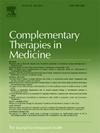Effects of different mind-body exercises on pain in patients with knee osteoarthritis: A pairwise, network, and dose-response meta-analysis
IF 3.5
3区 医学
Q1 INTEGRATIVE & COMPLEMENTARY MEDICINE
引用次数: 0
Abstract
Background
Osteoarthritis (OA) is a common chronic disease that leads to chronic pain, limited mobility, and reduced quality of life for patients. In recent years, mind-body exercise (e.g., yoga, tai chi, etc.) has been gradually recognized as a comprehensive intervention with positive effects on pain relief and improved function in arthritis patients. However, the evidence on the effect of mind-body exercise on pain relief in arthritis patients is inconsistent, and this meta-analysis aimed to assess the combined effect of mind-body exercise in reducing pain in patients with knee OA.
Methods
A systematic search using MEDLINE, Embase, Cochrane Library, and Webof Science was conducted from the beginning of the respective database information until December 2024, to identify randomized controlled trials (RCTs) on the effects of mind-body exercises on outcomes in patients with knee OA. Pairwise and dose-response meta-analyses were performed using Bayesian hierarchical random-effects models to analyze these effects. Cochrane Risk of Bias tool was used to assess the risk of bias of the included studies, and CINeMA was used to evaluate the confidence of the results.
Results
A total of 13 RCTs involving 558 participants were included in this study. The average age of participants ranged from 61 to 76 years. Mind-body exercise therapies had a small-to-moderate effect on pain compared to no-intervention controls (Hedges' g = −0.35). Among the mind-body exercise types, tai chi (Hedges' g = −0.41) had the greatest effect on pain levels, followed by yoga (Hedges' g = −0.38) and qigong (Hedges' g = −0.26). Of the 13 studies, eight were categorized as high risk of bias, with the main risk of bias coming from blinded implementation and selective reporting issues. Furthermore, the credibility of all mind-body exercises was extremely low owing to serious within-study bias and several other concerns
Conclusion
Mind-body exercise had a small to moderate effect on pain relief in patients with knee OA, with tai chi being the most effective, followed by yoga and qi gong. The mind-body exercise dose is clinically significant when it reaches 250–610 MET-min. Sex and age may affect treatment effects, with women responding more significantly to tai chi. Due to the limitations of risk of bias and low confidence level, future studies should expand the sample size, conduct strict blinding control, etc. to improve the reliability and applicability of research evidence.
PROSPERO registration number
CRD42024585874
不同身心运动对膝关节骨关节炎患者疼痛的影响:一对,网络和剂量反应荟萃分析。
背景:骨关节炎(OA)是一种常见的慢性疾病,可导致慢性疼痛、活动受限和患者生活质量下降。近年来,心身运动(如瑜伽、太极等)逐渐被认为是一种对关节炎患者疼痛缓解和功能改善有积极作用的综合干预手段。然而,关于心身运动对关节炎患者疼痛缓解作用的证据并不一致,本meta分析旨在评估心身运动在减轻膝关节OA患者疼痛方面的联合效果。方法:使用MEDLINE、Embase、Cochrane图书馆和Webof Science从各自数据库信息的开始到2024年12月进行系统搜索,以确定身心锻炼对膝关节OA患者预后影响的随机对照试验(rct)。使用贝叶斯分层随机效应模型进行两两和剂量-反应荟萃分析来分析这些效应。采用Cochrane偏倚风险评估工具评估纳入研究的偏倚风险,采用CINeMA评估结果的置信度。结果:本研究共纳入13项随机对照试验,共纳入558名受试者。参与者的平均年龄从61岁到76岁不等。与无干预对照组相比,身心运动疗法对疼痛有小到中等的影响(赫奇斯的g = -0.35)。在身心运动类型中,太极(Hedges' g = -0.41)对疼痛程度的影响最大,其次是瑜伽(Hedges' g = -0.38)和气功(Hedges' g = -0.26)。在13项研究中,8项被归类为高偏倚风险,主要偏倚风险来自盲法实施和选择性报告问题。此外,由于严重的研究内偏差和其他一些问题,所有身心运动的可信度都极低。结论:身心运动对膝关节OA患者的疼痛缓解有小到中等的效果,其中太极拳最有效,其次是瑜伽和气功。心身运动剂量达到250 ~ 610 MET-min时具有临床意义。性别和年龄可能会影响治疗效果,女性对太极的反应更明显。由于偏倚风险和置信度较低的限制,未来的研究应扩大样本量,进行严格的盲法控制等,以提高研究证据的可靠性和适用性。普洛斯彼罗注册号:CRD42024585874。
本文章由计算机程序翻译,如有差异,请以英文原文为准。
求助全文
约1分钟内获得全文
求助全文
来源期刊

Complementary therapies in medicine
医学-全科医学与补充医学
CiteScore
8.60
自引率
2.80%
发文量
101
审稿时长
112 days
期刊介绍:
Complementary Therapies in Medicine is an international, peer-reviewed journal that has considerable appeal to anyone who seeks objective and critical information on complementary therapies or who wishes to deepen their understanding of these approaches. It will be of particular interest to healthcare practitioners including family practitioners, complementary therapists, nurses, and physiotherapists; to academics including social scientists and CAM researchers; to healthcare managers; and to patients. Complementary Therapies in Medicine aims to publish valid, relevant and rigorous research and serious discussion articles with the main purpose of improving healthcare.
 求助内容:
求助内容: 应助结果提醒方式:
应助结果提醒方式:


